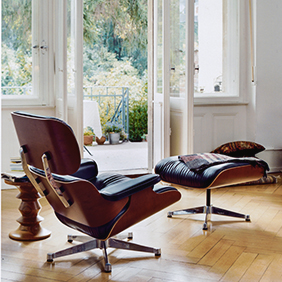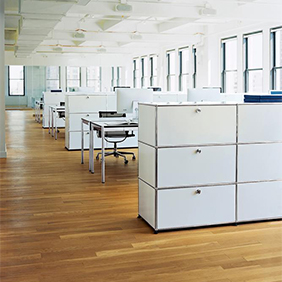Ludwig Mies van der Rohe & Lilly Reich
The designer couple Ludwig Mies van der Rohe & Lilly Reich
As a visionary designer couple Lilly Reich (1887 - 1845) and Ludwig Mies van der Rohe (1886 - 1969) had a significant influence on modern design and architecture.
While Ludwig Mies van der Rohe has been recorded by history as one of the most important architects of the 20th century with projects such as the German Pavilion at the 1929 World Exhibition in Barcelona, Lilly Reich stands, obscured, by his shadow although, in addition to developing her own canon, she was significantly involved in numerous of Mies's projects.
The collaboration between Reich and Mies van der Rohe began in 1924 and resulted in important projects such as the Werkbund exhibition "The Apartment" in Stuttgart (1927), for which Reich was responsible for the organisation and design of the exhibition halls, as well as for innovative installations such as "living room in mirror glass". These works laid the foundation for a modern living aesthetic characterised by clear lines, flexibility and functionality.

Lilly Reich & Ludwig Mies van der Rohe
A highlight of the collaboration was the design of the furniture and interior design for the German Pavilion in Barcelona, including the famous Barcelona armchair. Reich played a major role in these designs, but they were mostly attributed exclusively to Mies van der Rohe, which was not only due to the patriarchal structures of the time, but also because large parts of Lilly Reich's archive were lost in the Second World War. Nevertheless, many designs such as the Brno Chair or the Krefeld Sofa, which emerged from the close interlinking of architecture and interior design, bear her signature.
In addition to her design work, Reich was a pioneer of her time: she was the first woman on the board of the German Werkbund and played a key role at the Bauhaus Dessau, where she headed the the weaving workshop until 1933.
While Mies van der Rohe emigrated to the USA in 1938 where he both took over the management of the Architecture Department at the Armour Institute in Chicago and opened his own architectural office, thereby enabling him to establish himself and develop a successful career in America Reich's career in Germany was permanently affected by the Second World War.

























